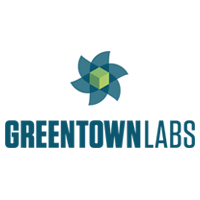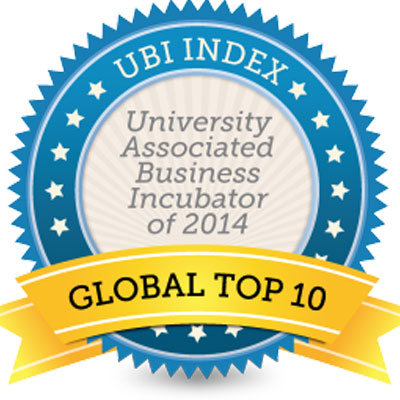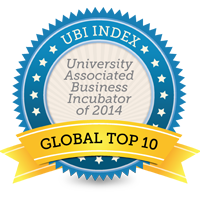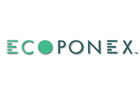LACI@ProspectSV offers early stage support for promising clean technology companies designed to prime pilots and increase market adoption throughout California.
February 19, 2015 (Silicon Valley, CA) – Prospect Silicon Valley (ProspectSV) and the Los Angeles Cleantech Incubator (LACI) are excited to announce the launch of LACI@ProspectSV, results-oriented help for promising early stage companies that augment ProspectSV’s state-of-the-art Technology Demonstration Center and commercialization programs with LACI’s world-class incubation platform. The LACI@ProspectSV initiative is part of the broader US Department of Energy (DOE) funded California Cleantech Commercialization Coalition (4C), the first statewide partnership to provide comprehensive support to clean energy startups.
ProspectSV is leading the way as a California commercialization catalyst for emerging clean technology companies that are ready to bring their product to market. Their 23,000 sf facility supports leading technology pilots and demonstration projects, and has become a headquarters for product refinement, testing, and commercialization. In addition, ProspectSV builds partnerships to leverage infrastructure as “living laboratories” for next-generation technology, providing a world-leading stage for investors, potential customers, global corporate leaders, and government policymakers to see innovation in traffic, vehicle, building and energy technology in action.
To help further meet the demands of many emerging companies, and to prepare them to leverage the substantial assets of ProspectSV, LACI will offer its incubation support to emerging companies at ProspectSV facilities. In turn, ProspectSV will offer its facilities and expertise to help the companies that LACI currently serves in southern California.
“We are thrilled with this important partnership, and to be part of the 4C team representing California,” said Doug Davenport, Executive Director of ProspectSV, “Working together, our programs will make a great impact on emerging technology coming out of this part of the country and will create a model that can be used globally.”
“Connecting the best organizations across California, which serves as the global model for cleantech innovation, is the logical evolution of our cluster,” said Fred Walti, Executive Director of LACI. “Together, we can better support the best young companies and see greater adoption in global markets.”
LACI is designed to help early-stage cleantech companies to deftly navigate the difficult startup years through its formalized support system, deep bench of expert mentors, strong network of investment capital and market resources, and pragmatic education and training, Named a UBI Global Top 10 Incubator in 2014 in just its 3rd year operating, LACI has formally incubated 30 companies that have secured over $50 million in funding and have created over 450 jobs. LACI@ProspectSV is its second satellite, following the successful launch of LACI@CSUN in 2014.
This partnership between LACI and Prospect SV is a vital bridge between innovation and commercialization partners across California as part of the broader US Department of Energy (DOE) funded California Cleantech Commercialization Coalition (4C). The 4C is the first statewide partnership to provide comprehensive support to clean energy startups, offering clean energy innovators a unique suite of full-spectrum, long-term support services to help them bring promising clean technologies to market, including best-in-class:
By unifying industry-leading incubation, prototype manufacturing, commercial-scale pilots, and market-entry programs, the 4C substantially de-risks an inherently risky sector, facilitating investment from a wide array of capital sources in California, the top clean technology market in the nation. For information on the 4C, please visit https://4c.laci.org
About Prospect Silicon Valley (ProspectSV)
Prospect Silicon Valley (ProspectSV) is the first nonprofit, Silicon Valley-based technology commercialization catalyst for smarter, cleaner cities globally. ProspectSV supports emerging technology companies with access to facilities, platforms, partners, and market connections, including its Demonstration Center, a $12 million, 23,000 sq. ft. facility with industrial and lab space, office and meeting rooms, promotional space and commercialization support staff. ProspectSV includes market connections and early adoption in the municipal sector through the Bay Area Climate Collaborative, a unique public-private partnership assisting communities across the Bay Area in taking on their biggest challenges in reducing carbon emissions. Learn more at www.prospectsv.org.
About the Los Angeles Cleantech Incubator (LACI)
LACI is a non-profit, public-private partnership that helps promising companies deliver market-ready cleantech solutions and the jobs that come with them. LACI combines capital, universities, research, government support, entrepreneurs, corporate partners, and business leaders in order to drive innovation throughout the regional, state, and global economy. Recognized as a Top 10 Global Incubator in 2014 by UBI, in its first three years LACI has helped 30+ companies who have raised $50+ million and have created 450+ jobs. Learn more at www.newlaci.staging.wpengine.com.










